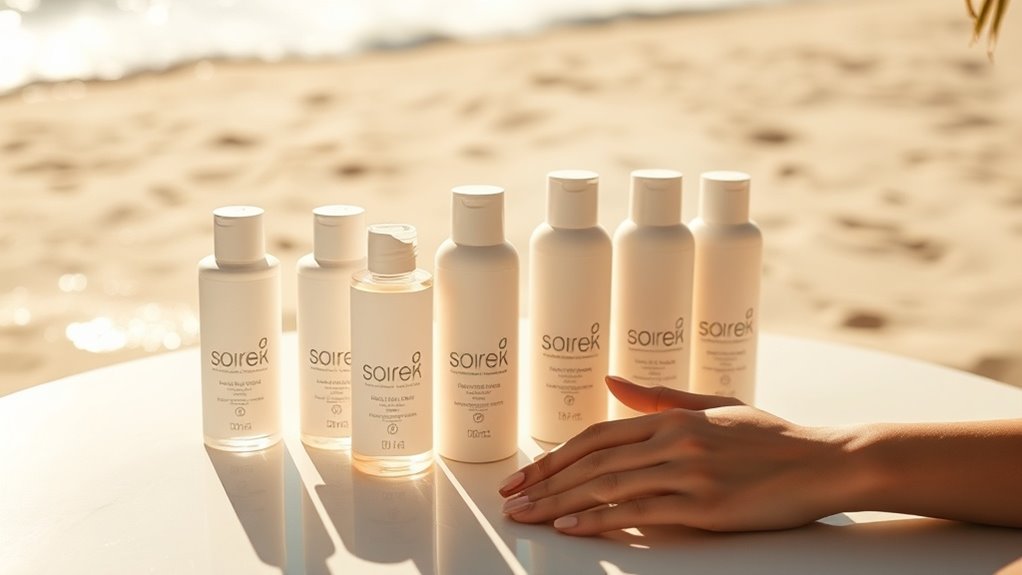Everything You Need to Know About SPF and Sun Protection
Key Takeaways
- SPF measures protection against UVB rays, with SPF 30 blocking about 97% and SPF 50 blocking about 98% of UV radiation.
- Choose physical or chemical sunscreens based on skin type and preferences; both types effectively protect against
Understanding SPF: What It Means and How It Works
What does SPF really mean for your skin?
SPF, or Sun Protection Factor, measures how well a sunscreen protects against UVB rays, which cause sunburn and skin damage. An SPF 30 blocks about 97% of UVB radiation. To effectively safeguard your skin, consult an SPF guide to understand different ratings and ensure you’re applying sufficient product for maximum protection. It’s important to note that while a higher SPF provides more protection, SPF 50 only slightly improves coverage compared to SPF 30, offering about 98% UVB blockage.
Stay informed and proactive.
Types of Sunscreens: Physical vs. Chemical
Choosing the right sunscreen is crucial for effective sun protection, and understanding the differences between physical and chemical sunscreens can help you make an informed decision.
Physical sunscreens contain mineral ingredients like zinc oxide and titanium dioxide, reflecting UV rays. In contrast, chemical sunscreens absorb UV radiation through organic compounds, converting it into heat.
Both have unique benefits and application considerations.
Choosing the Right SPF for Your Skin Type
How can you determine the best SPF for your unique skin type? Understand that lighter skin types generally require a higher SPF, typically 30 or above, while darker skin types can often use SPF 15. Consider factors like skin sensitivity, outdoor activity duration, and environmental conditions. Additionally, using sunscreen daily is vital for preventing premature aging and ensuring your skin remains youthful and healthy. Ultimately, choose broad-spectrum protection, ensuring you safeguard against both UVA and UVB rays for optimal effectiveness.
How to Apply Sunscreen Effectively
Applying sunscreen effectively is crucial for maximizing its protective benefits.
Apply a generous amount—about one ounce for full-body coverage—15 minutes before sun exposure. Reapply every two hours, or more frequently if swimming or sweating.
Ensure even coverage by using circular motions, and don’t overlook commonly missed areas like ears, feet, and the back of your neck.
Proper application significantly enhances UV protection. Additionally, understanding how sunscreen formulations can affect absorption and effectiveness is vital for achieving optimal results.
The Importance of Daily Sun Protection
Daily sun protection is essential, even on cloudy days or when you’re indoors, as harmful UV rays can penetrate windows and impact your skin.
Consistent use of broad-spectrum sunscreen minimizes risks of skin cancer and premature aging.
Research indicates that daily application of SPF 30 or higher significantly reduces DNA damage and prevents photoaging.
Make sun safety part of your daily skincare routine.
Myths and Misconceptions About SPF and Sun Safety
What misconceptions about SPF might be leading you to underestimate the importance of sun protection? Many believe that a higher SPF means longer protection, but it only extends your time in the sun marginally.
Additionally, some think they don’t need sunscreen on cloudy days. In reality, up to 80% of UV rays penetrate clouds, making sunscreen essential regardless of the weather.
Stay informed!





